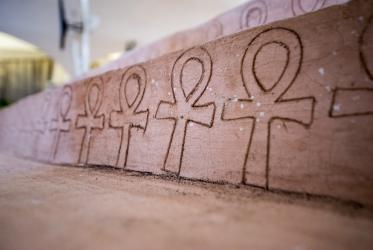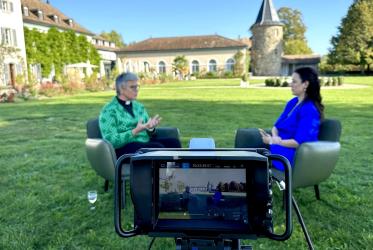“Come and See,” a theological invitation to the World Council of Churches (WCC) Pilgrimage of Justice and Peace was published in May 2019 and, for the close-knit group who labored to develop it, the journey was life-changing.
The special study group, part of the WCC’s Faith and Order Commission, traveled the globe together, discussing in different contexts how to open the doors to common witness with an appreciation of diverse traditions.
The “Come and See” text draws from four different traditions that pave the way for a road on which churches might go on a pilgrimage together.
Sandra Beardsall, professor of Church History and Ecumenics at St Andrew's College, Saskatoon, Canada, is the co-convenor for the study group, and she spoke of her love for the brief glimpse, early in John’s gospel, of Andrew and his friend as they begin walking behind Jesus in a street in Bethany. “Teacher where are you staying?” they ask him. “Come and see,” says Jesus, and their lives are never the same again.
“When the 10th Assembly of the WCC invited the churches on a Pilgrimage of Justice and Peace, it asked Christians to take up the challenge of journeying together in ways that challenge and change us,” reflected Beardsall. "Pilgrimage is both personal and communal. It is prayerful, and it is curious.”
The “Come and See” text invites us to consider the theology that grounds our walk, she said. “It walks us through scripture and history, theological reflection and contemporary issues,” she said. “It reminds us that journeying together builds community and even unity among persons and churches.”
As the group reflected and re-reflected, through many of hours of dialogue to craft the “Come and See” document, their lives, too, would never be the same again.
Co-convenor Rev. Prof. Dr Jaeshik Shin said that, for him, preparing “Come and See” was a kind of pilgrimage in itself. By meeting at different places around the world, the group had an opportunity to consider the document from different contexts.
“During the pilgrimage of preparing 'Come and See,’ our members have travelled together and become one family beyond differences such as religious affiliation, gender, region, and age,” reflected Shin. “As a Faith and Order document, ‘Come and See’ focuses on the biblical, historical, and theological aspects of the Pilgrimage of Justice and Peace. We expect it might be used in the context of theological education and encourage those struggling for peace and justice.”






